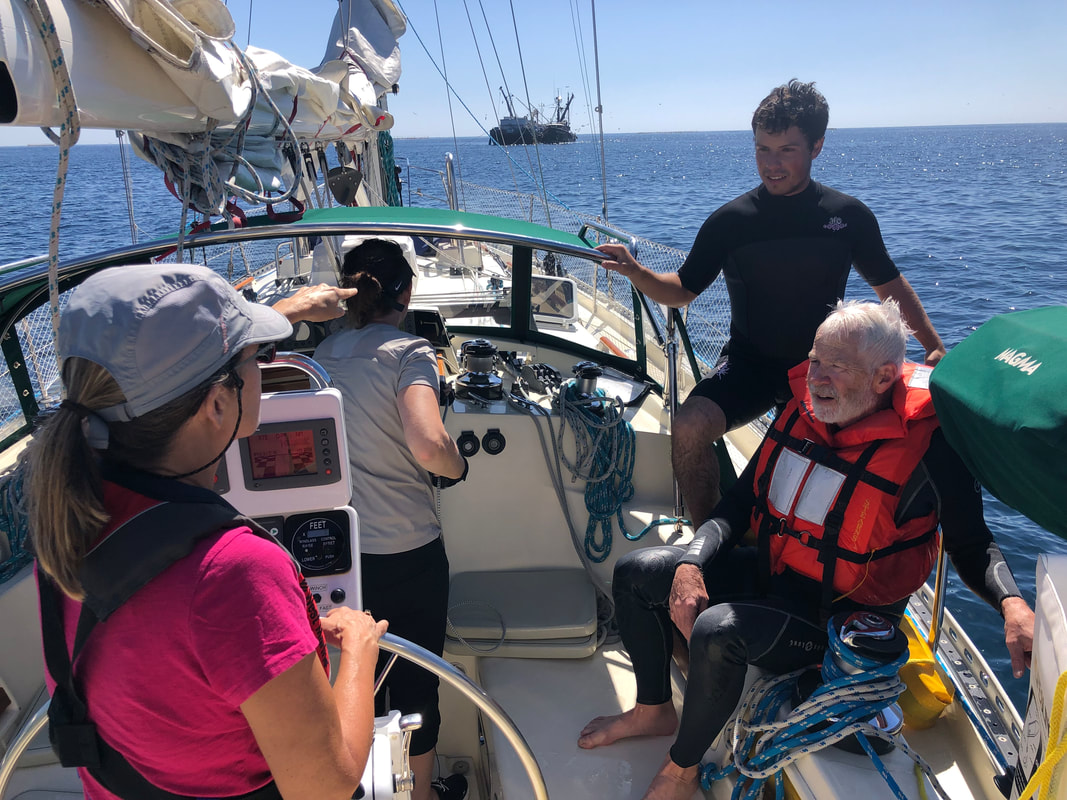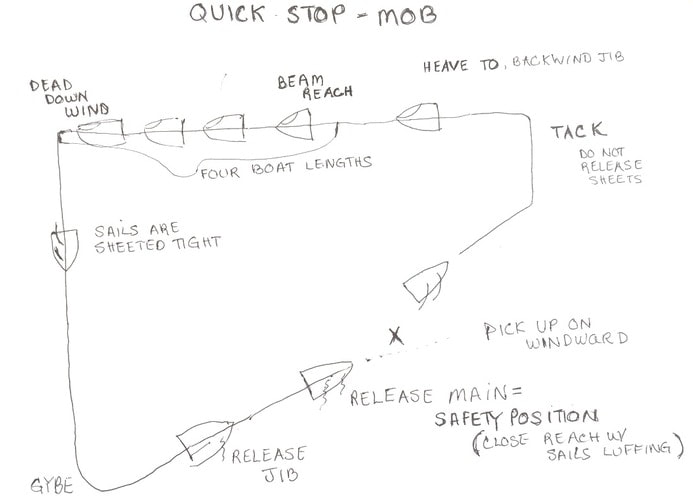MOB 101
Man Overboard is one of the most important skills to have practiced, disciplined, and ready for any passage or time you step off land. Nothing strike's more fear in a sailor than the shout of "Man Overboard", so we practice until it becomes second nature to retrieve someone from the water.
Skills to Learn
- Use of life-sling and hoist at the dock.
- Heave To.
- Use of life-sling in the water.
- Quick Stop.
- Pick Up a Crew Member.
- Be picked up by another Crew Member.
- Pick up crew with Engine.


